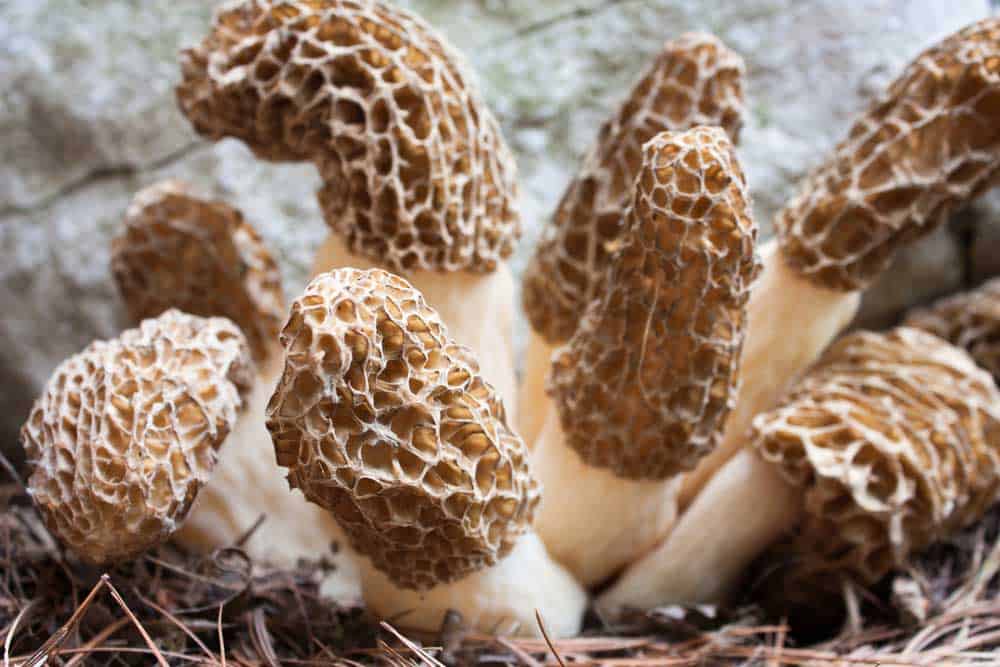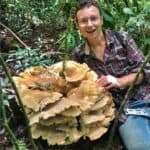Table of Contents
For many mushroom lovers around the world, nothing means spring-like morel mushrooms. They are hands down some of the most delicious mushrooms. Their texture is crispy, the flavor is meaty, and they have everything you want in a mushroom.
While morels are generally regarded as a wild-harvested mushrooms, their cultivation is feasible. Growing morels isn’t like growing oysters or button mushrooms though. It’s a highly experimental process that continues to stump scientists and amateur mycologists. Unlike other wild mushrooms, certain varieties of morels are capable of growing as saprophytes that decompose soil organic matter.
While there have been some morel cultivation success stories, and impressive videos to prove it, it’s not something anyone has mastered. Some small-growers have had success inoculating their properties or even growing them in controlled environments. Meanwhile, in China, large-scale production is being attempted with mixed results.
Morels are a Mushroom we cannot tame… Yet!
Up until now, Morels are not a “beast” we can tame. Like many wild mushrooms, there is still so much mystery to be uncovered in their ecology and growth. We don’t fully understand how they function and their roles in the environment. This is partially due to their cryptic soil-dwelling habitat, but also due to their mystifying diversity that escapes the untrained eye.
If anyone can attest to this, it’s the investors in the Chinese morel farming industry that are struggling with economic sustainability. They have heavily invested in investigation and top-of-the-line equipment, but still, struggle to obtain consistent results.
Morel Species suitable for Cultivation
There are many species of morels with unique ecologies. Some are soil-inhabiting secondary decomposers, while others only exist in symbiosis with tree hosts. The secondary decomposers are the species with the potential for cultivation. In fact, these morels often occur in gardens and landscaping.
Morel species with potential for cultivation:
- Morchella rufobrunnea “Blushing Morel”: This species occurs on landscaping in the Western United States.
- Morchella importuna “Black Morel”: In 2017 this species accounted for 80-90% of morels cultivated in China. The focus on this species by Chinese scientist suggests this may be one of the best options for cultivation.
- Morchella sextelata “Burn Morel”: While occurring post wildfires, this species has been successfully domesticated and developed in China.
- Morchella eximia “Burn Morel”: Also a post-fire morel, it is currently undergoing investigation for cultivation.
- Morchella esculenta “Yellow Morel”. This species has been used for indoor cultivation of morels.
Spore Slurry and Spawn Methods
These are the two most used methods for morel cultivation. While these methods can yield results, there are no promises. This is a field in its infancy. Even producers of morel spawn consider this a purely experimental mushroom to grow! I only offer guidance for the innovators willing to take on the challenge.
- Spore Slurry: This is the most passive method. You can use fresh or dried morels as your source of spores. Success is highly variable and depends on the habitat options you give it
- With Spawn: This is a more intensive cultivation method. It involves conducting an inoculation with living mycelium. This will require high-quality morel spawn and more intensively prepared cultivation areas.
Growing Morels with a Spore Slurry
This method is the most accessible to amateur enthusiasts looking to grow morels. You can attempt this using fresh or dried morels. For US growers, the best regions to attempt this are on the west coast and some parts of the northeast. This is where landscaping morels “naturally” occur, suggesting this may be the best habitat for them. If you find landscaping morels in your region, then you know your climate is suitable.
1. Make sure you are using the right species!
Your best bet may be using landscaping morels if they are present in your area. These are M. rufobrunnea or M. importuna. Store-bought morels are usually not either of these species.
2. Blend Your Morels In Water
This will release hundreds of thousands of spores into the water. Four to five morels in a 5-gallon bucket should be plenty, but feel free to add more if you got morels to spare!
3. Find or Prepare a suitable Habitat
Find rich organic soil in a shady location. You can try amending your soils with composted sawdust or woody materials. Avoid using nitrogen-rich and bacterial-dominated composts. Add a layer of hardwood mulch. Woody materials from Oak, Alder, Maple and other hardwoods may work best.
4. Water in your Spore Slurry
This is probably best done in spring or whenever landscape morels appear in your region. After applying the spore slurry, water the soil thoroughly.
Growing Morels with Spawn
Spawn is mycelium grown for inoculating a larger substrate. It is usually produced under highly controlled settings to cut risks of contamination. It is typically grown on grain or sawdust. Make sure to source your spawn from a trusted and respected source!
Growing morels via spawn is an experimental process with mixed results. While it’s done like this in China, reports are showing it isn’t quite economically sustainable yet. This method requires experimentation and acceptance of failure!
- Trays or Tubs – Some innovators have grown them in trays or tubs. This resembles how people often grow magic mushrooms in their closets.
- Outdoor Beds – In China, cultivation takes place in agricultural fields under the dense shade of cloth. Bags of fully colonized spawn get laid in rows composed of a rich organic substrate. There are a good amount of YouTube videos that display the results of successful outdoor morel grows done in this method. In some cases, you see the agricultural plots overgrown with small weeds and full of morels!

